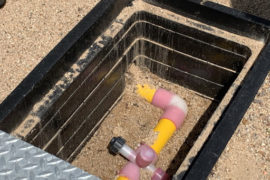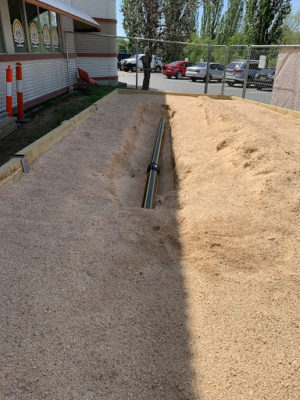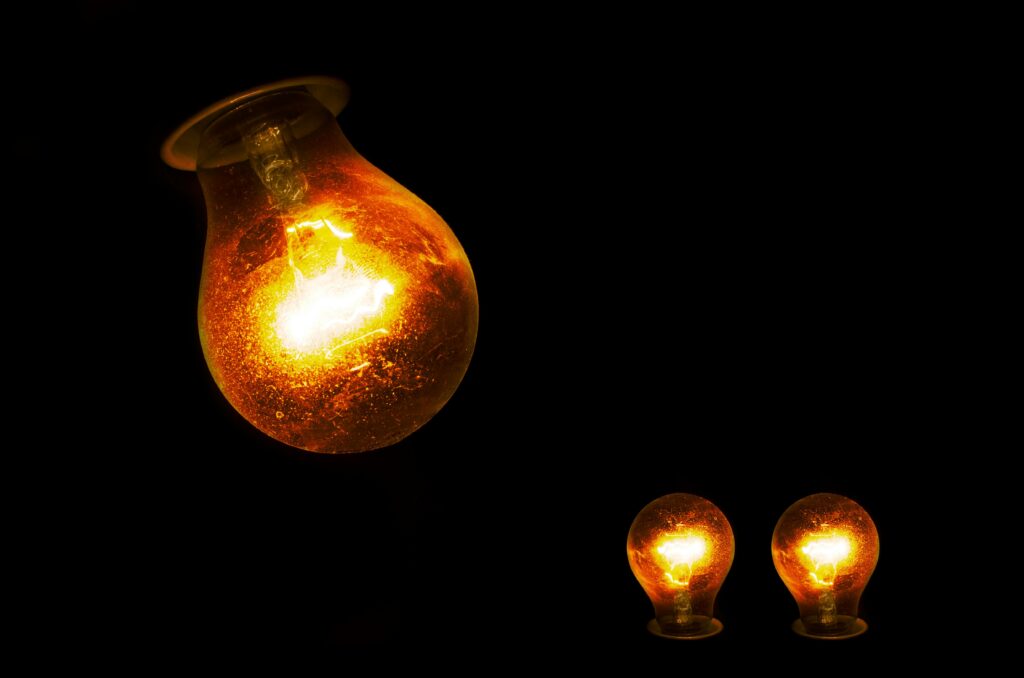It is great to see that there are several organisations vying for the lead in the development of hydrogen technology, and hydrogen as a green fuel. There seems to be several claims, which at first glance seem viable.
During my recent visit to Canberra, we were privy to take a tour of the Hydrogen Test Facility at the Canberra Institute of Technology (CIT). A joint collaboration between the CIT and evoenergy.

The CIT Hydrogen Test Facility has a unit that produces Hydrogen – via a generator. With around 1kg of demineralised water, the solar panels produce power to produce the hydrogen and pressurise to around 300-900 Bar which in turn fill the cylinders.


Then the un-odourised hydrogen gas is used in a simulated gas reticulation natural gas network, a mini version of Canberra’s Natural gas network, including the regulators and gas meters.
The simulated network has been holding pressure at 200kPa now for the past two years. During this period they have been testing the effect on the existing pipework materials and associated control equipment including the pressure regulators and the gas meters. They found some issues with degrading in the regulators within a short period. and are investigating alternative regulators or material that can handle the hydrogen




Pictured above is our Canberra Bizmatrix Restricted Gas Licence Course students getting a presentation and tour from Edward from evoenergy on Hydrogen.

In the next phase, evoenergy has created a second sand pit where they will arrange for several Gas Fitters to install the various pipework / fittings and connections in the simulated hydrogen network. This establishes how the various joints will hold up and what additional training if any is required for a 100% hydrogen network.

evoenergy CIT have also simulated a domestic gas installation and converted several domestic appliances to hydrogen. Not pictured here are the cooktops and other domestic gas appliances.
Some of the issues with hydrogen are the following:
• The products of complete combustion are Heat and water.
» Which means high levels of moisture- therefore it is essential to vent to the atmosphere- otherwise you will have a wet kitchen or premises.
» Heating value is only around 16 MJ/m3 as compared to 38MJ/m3 Natural gas- so there is a need to work out how to increase the heating value.
» The hydrogen flame colour in a bright location !.
» Suitable odorant due to the size of the hydrogen molecule and its possible to be acidic.

Hydrogen is dejavour, as in Hydrogen was a major component of the old towns gas system along with carbon monoxide, and the heat value of towns gas was only 17 MJ/m3. In around 1994, the north side of Brisbane was converted from towns gas to natural gas and now it looks like we are going back to the future or is that the past?
The BBQ pictured below was converted at a cost of approximately $4,000 and works well apparently. For the technical boffins, the burners work on a gas pressure of around 2.00kPa, and yes the flame colour is orange. This colour may be generated by the metals and rust etc from the burners… The costs will reduce with time, an expensive steak add beers and it’s all good.

I know many of you who are reading my blog maybe too young to remember the Hydrogen filled airships and the incident with the Hindenburg. Now there is no doubt that hydrogen is highly flammable, the ill fated demise of the Hindenburg has put a cloud on hydrogen as a safe fuel I am not certain about the extinguisher supplied for the facility. As history notes: Graf ZEPPELIN built not only Zeppelin’s Hydrogen Airships, but also built the Hindenburg. Unfortunately an extinguisher would not have saved the Hindenburg.

So what is the future of hydrogen? And how safe is Hydrogen? Well actually hydrogen already exists in our gas cylinders Propane/LPG C3H8 or Butane C4H10 and in natural gas CH4. So Gas Fitters, you are already working with hydrogen! This test facility and other test facilities need to determine what effect does the hydrogen have on the existing infrastructure. If the hydrogen starts breaking down or corroding items, then there is a major safety issue.
So Step 1 – Confirm the network and components are sound. Make certain, a gas leak can be detected before there is any increase in the percentage of hydrogen in the network, and do not forget the appliances need to work correctly with any increase in hydrogen. The first phase could be injected around 10-20% into the existing natural gas networks for testing and public acceptance, aiming at 100% . However, I believe the networks will be used as a storage facility or a back up. The safest method is to create local fuel cell systems where there are solar panels and generators to produce power to create Hydrogen to store or use, and to create power for light, heating, cooking and cooling etc. Sounds crazy, but it would minimise the risks. The work on the generator’s fuel cell will be more electrical, but this will create a new trade or a new technician which will be a blend of trades. And just maybe this new technician would not be limited to appliances, they could encompass vehicles.
Hyundai has supplied or is supplying the Australian Government 20 x Hydrogen/electric vehicles for testing in Canberra, each vehicle gets a range of 690 kM each fill, Zero CO2 -CO – emissions, the hydrogen fuel cell produces electrical power hydrogen powered electric vehicles. Hyundai has Australian Approval of NEXO https://www.hyundai.com/au/en/cars/coming-soon/nexo. Currently near the CIT Fyshwick they are installing one of the many Hydrogen refuelling stations.

There are further developments to store the hydrogen safely at atmospheric pressures in an organic compound and when required just heat the vessel to extract.
So where is the future with Hydrogen, I believe it’s in a positive place. Anything that reduces or eliminates carbon emissions and when burnt only produces heat and water vapour must be a good thing. But the best part, if we use solar cells (the Sun) to produce power and water to produce the hydrogen, when we use the or burn the hydrogen we produce Heat and Water .
Is that perpetually energy? And its free ….
Not certain if the perpetual loop continues if we export the hydrogen?
Be part of the hydrogen future ask about our gas courses and restricted electrical courses that are suited.
Darrel Vecchio
Technical Education Director
BIZMATRIX EDUCATION
Looking for a qualification in Hydrogen?
Certificate III in gas fitting a full qualification for installation, service and repairs or Type A gas appliance and gas pipework systems. Suited for a gas fitting pathway from GWL interim to full GWL
Restricted gas licence course – Only service and repairs Type A gas appliances mostly domestic / commercial
Type B gas courses – Installation, commissioning and service of Type B gas appliances. Suited for industrial gas appliances on Natural Gas, Propane, Bio-gas and Hydrogen
Advanced Type B gas courses – Design Industrial Gas systems (Type B gas devices/appliances). Suited for the design of industrial gas appliances on Natural Gas, Propane, Bio-gas and Hydrogen (designers / approval authorities and for advance Type B gas licence requirements).
Restricted electrical licence courses – Suited to and required for existing trades seeking to do incidental electrical work around their call of trade and will be required to repair the associated fuel cell and generator technology, electric vehicle charging stations .
For more information contact one of our friendly team members at Bizmatrix Education on 07 3732 6500 or 1300 588 749 or email info@bizmatrixstage.wpengine.com




